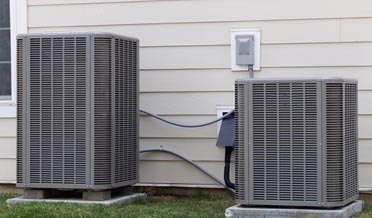AC Repair Webster: How to Know When You Need to Call an HVAC Contractor
Homeowners often hear instructions, might I say pleas, to maintain the home’s air conditioner system regularly. Actually, this maintenance covers the entire HVAC system—both the heating and the cooling side, since most major components are involved in year-round air handling.
Few homeowners understand the depth of cleaning and testing with such maintenance visits. These major components receive special attention to ensure they are functioning properly and to avoid AC Repair Webster.
Evaporator Coil
The cold (40 degrees Fahrenheit) Freon enters the evaporator coil and is brought into contact with hot air from the living space. Two things happen simultaneously in the chamber that surrounds the coil: the hot air gives up its heat and returns to the home cooler than when it entered, and the moist air gives up its humidity on the sides of the evaporator coils and drains away.
- Maintenance of this area includes cleaning the coils and making sure water has not collected dust from the air. Accumulated dust would hamper the transfer of heat.
- If the drain line is growing algae (which tends to happen in cool, dark, wet areas) it is cleaned away before it can create a clog.
- Should rust or debris collect in the drain pan, it can block the drain line and cause water to spill onto the floor. The drain pan will be thoroughly cleaned, and an algae inhibitor will be poured into the drain pan.
The network of tubing between the evaporator and condenser will be visually inspected to ensure all is well.
Condenser Unit
The outdoor condenser unit contains three major structures: the compressor motor, the condenser network of tubes, and a huge central fan. Each of these structures must be cared for properly to avoid costly AC Repair Webster.
- The compressor motor is responsible for compressing the refrigerant commonly called Freon and pushing it to the evaporator coil. The refrigerant level must remain in a very narrow range of pressures on either side of the compressor motor. This test will reveal much about the system’s health.
If the refrigerant level is lower than the proscribed pressure, it indicates a leak in the system. The inspection report will include this detail, recommend a repair to find/repair the leak, and restore the Freon to design pressures.
- The condenser covers will be removed and the accumulation of dust and grass clippings will be washed away. This step increases the efficiency of heat transfer and prevents the compressor motor from overheating.
- Any leaves or yard litter that has fallen into the central chamber will be removed.
Thermostat Check
The thermostat is the ON/OFF switch for your system, located on an inner wall of the home, away from direct sunlight. The maintenance visit will change the batteries, check the thermostat function, and assist with programming if necessary. This will include taking temperature readings at several supply vent openings.
Vent Checks
Most ductwork is covered and inaccessible, but a visual inspection of everything visible may reveal trouble. If obvious gaps are observed, they will be reported for future repair. (These are like an open window, pushing your cool air outdoors.) If the vents indicate obvious dust buildup, the report will recommend duct cleaning.
General Conditions
Maintenance will also include:
- Replacing (or cleaning) the air filter. Surprisingly, this easy DIY task is often skipped by homeowners.
- The function of key electrical switches, sensors, and control devices will be checked. The current running through these devices varies tremendously, so this is not a DIY task. Certain electronic tests uncover specific common problems. If further repairs are needed, this will appear in the maintenance report supplied to the homeowner.
AC Repair Webster: Know When To Call the Experts
Proper equipment, training, and experience are all necessary for these steps. That’s why Doctor Cool is here to help you with your AC Repair Webster needs. Call Doctor Cool & Professor Heat today at 281-338-8751 or email Doctor Cool.

